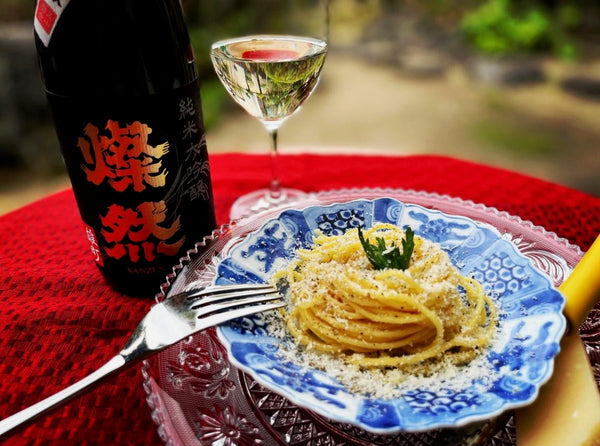Although sake is very versatile and gets along well with many types of cuisine, it can still sometimes be challenging to figure out how to pair it with food. You may not know where to begin regarding sake and food pairing, but fear not, we're here to help.
1 - Bring On The Umami.
In the early 1900s, the Japanese scientist Kikunae Ikeda discovered that when a particular type of amino acid called glutamic acid and a type of nucleic acid called Inosinic acid combine, they produce this mysterious flavour that, for some people, simulates a trip to culinary heaven. He also discovered that some foods, like kombu and green tea, are naturally high in both glutamic acid and Inosinic acid and that heat can amplify the effects.
Until recently, this concept of umami was primarily ignored by the west even though it's something that most people will have tasted at some point in their life. We might refer to it as meaty, savoury, or just delicious. Indeed, it is pretty tricky to define and incredibly vague, perhaps why it remained under the radar for so long outside Japan. In the west, it is that flavour you can't quite put your finger on, but it is the cornerstone that forms the foundations of Japanese cuisine itself in Japan. The explosion of Japanese food culture worldwide is also causing a buzz outside Japan in some corners of the gourmet food world.
Due to the higher protein levels in the raw ingredient, sake is naturally higher in amino acids, particularly glutamic acid, than wine. And due to the acidity and tannin in the wine, particularly red, umami tends to make wine taste a little stiff unless there is salt in the dish to balance things out. Umami is essentially sake's trump card at the dinner table. At an elementary level, sake and wine pair equally with most dishes, but throw in umami, and wine just has to wave the white flag.

Parmigiano reggiano pasta pairing with Sanzen jumai daiginjo omachi
2 - Avoid Clashes Of Aromas.
It is easy to overlook aroma when pairing sake with food. However, almost half of the tasting process happens not in the mouth or on the tongue but in the nose. Scientists have concluded that our taste buds can only communicate 4-6 basic tastes. Some studies suggest there may be up to 1 million tastes that our tongues simply aren't sensitive or well-tuned enough to process. The six tastes are commonly accepted as salty, sweet, sour, bitter, umami and fatty.
Sake offers tremendous diversity on the nose: from the fruity and floral bouquets of ginjo sake to the nuttier, more cereal-centric aromas of junmai with the quirkier lactic and oxidative aroma profiles found in aged sake and traditional kimoto and yamahai styles sitting somewhere in between.
When pairing with cuisine, junmai is perhaps the safer option because of its tamer aroma profile. Ginjo's more predominant floral aromas may clash with cuisine, which also has intense aromas. However, if your dish is more on the subtle side, then a gorgeous and floral ginjo sake will create a gorgeous contrast.

Prosciutto pairing with Sanzen Tokubetsu Junmai Omachi
3 - Match The Texture.
The texture is the mouthfeel of the sake; it can be hard, viscous, or elastic. The texture is essentially determined by the hardness of the water used to brew the sake. Hard water has a richer mineral content and tends to produce a much more grainy, rougher sake, while soft water produces a smoother, silkier, juicy mouthfeel. Higher glucose content can sometimes increase its viscosity, but this is usually proportionate to the acidity levels.
For example, cuisine with a soft mouthfeel, such as miso-tofu or sashimi, complements sake that has a clear, sharp taste. It is why sushi and especially sashimi are often paired with highly polished ginjos and daiginjos. On the other hand, nigori-zake, or cloudy sake, has a thick and creamy texture in the mouth, and when matched with fishy stews and mackerel cooked with miso, it adds depth to the dish.
4 - Match The body.
Lastly, pairing the body or the richness of the sake with that of the cuisine. Rich cuisine is best paired with rich sake, and light cuisine with light sake. Matching the weight is essential to avoid clashes and having one of the elements in the pairing overwhelming the other.
For example, cooked eels have a very thick taste and work well with mature sake with a well-defined profile. Cuisine, such as carpaccio or white fish, where the ingredients should be centre stage, can truly make its statement when matched with refreshing and lighter ginjo sake.
We hope these four tips will help you be adventurous in your pairings and make your next dinner party more exciting!

Comments (0)
Back to Sorakami Sake Blog